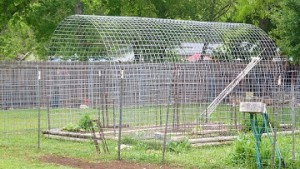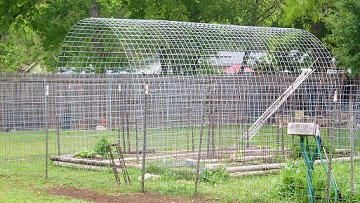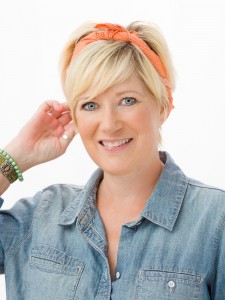Truth be told, I’m somewhat of a new vegetable gardener. I’ve only been growing edibles for about 4 years now, and I’ve learned a lot about what works and what doesn’t — like squashes, for example. We are a big squash family. We love all of them, the summer squashes and the winter squashes. But my veggie garden isn’t all that large, and squash plants take up a lot of space. So, after seeing some inspiring images on Pinterest, we set out to build a Squash Tunnel.

- It saves space.
- It’s healthy for the squashes to hang overhead rather than lay on the ground.
- It’s easy to harvest them.
Here’s what you need:
(4) Tall Stakes — We used 4’ tall T-posts
Ranch panel fencing — We purchased (3) 20’ x 5’ pieces of ranch panel with 4”x4” openings. Look for it at a home improvement store, fence supply company or building supply company. You may only need one panel depending upon how large or extensive you want your tunnel to be.
Baling wire — Sturdy zip ties will also work
Plants — Any vining veggie (cucumbers, zucchini, yellow squash, etc.)
Here’s how we did it:
- Determine where you want the tunnel. Choose a sunny, level site, and measure out how wide you want your tunnel to be. Ours is about 8’ wide to provide ample room for plant growth and walking underneath.
- Set the stakes. Set them 12” into the ground, two on each side. If your ranch panel is 5’ wide like ours, set the stakes just a few inches inside that width on each side.
- Attach the ranch panel. You will need a couple of buddies to help you, as the panel is unwieldy. Using baling wire or zip ties, attach the panel to the outside edge of the stakes on one side, then curve it overhead to be attached to the stakes on the other side.
- Plant your veggies. Plant vining veggies on the inside of the tunnel, close to the ranch panel. I planted one on each side, so they will grow up and meet in the middle.
Tip: Use Jobe’s Organics for Vegetables & Tomatoes to get your plants off to a good start and to ensure a good harvest.
Jenny Peterson is an Austin, Texas-based garden designer with her own firm, J. Peterson Garden Design, as well as a writer, author and speaker. She specializes in designing, writing and speaking about gardens that enhance the quality of life, heal from the inside out and help to create balance and wellness.

